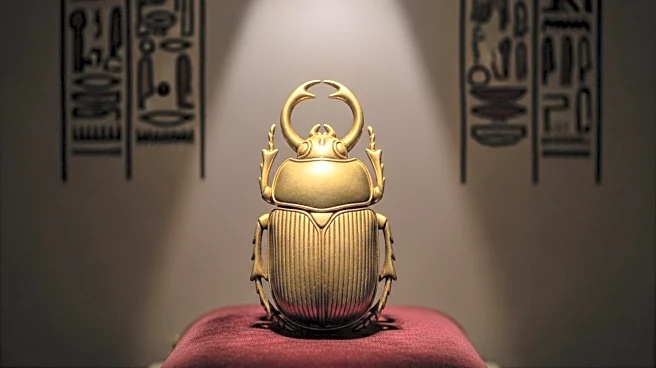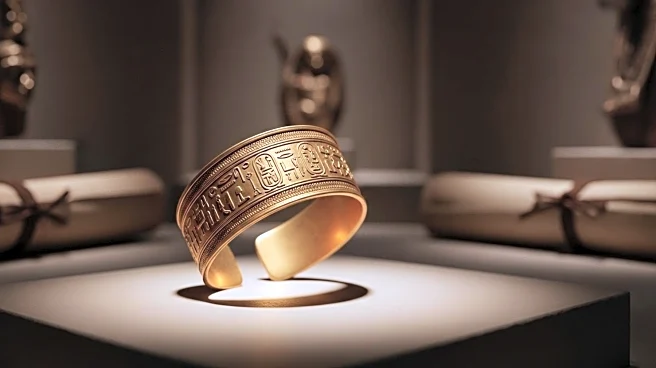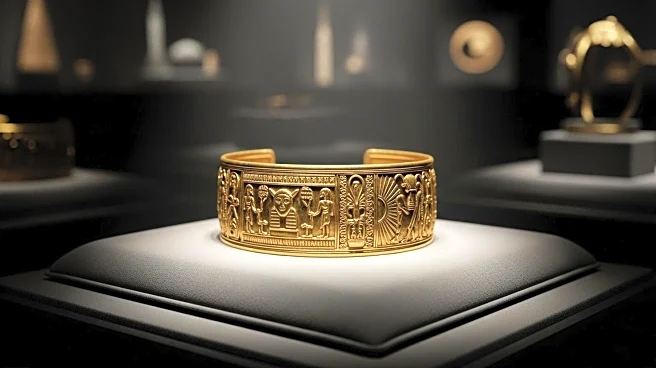What's Happening?
Egyptian authorities have launched a nationwide search for a 3,000-year-old gold bracelet that disappeared from the Egyptian Museum in Cairo. The bracelet, adorned with lapis lazuli beads, belonged to King Amenemope, a pharaoh from the 21st dynasty. The artifact was undergoing restoration in preparation for an exhibition in Rome when it went missing. The Egyptian Ministry of Tourism and Antiquities has taken immediate legal and administrative measures, including alerting border crossings, seaports, and airports to prevent the bracelet from being smuggled out of the country. The museum has formed a committee to inventory all artifacts in the restoration laboratory, as there were no surveillance cameras in the area.
Why It's Important?
The theft of the bracelet highlights ongoing challenges in protecting Egypt's cultural heritage from theft and illegal trade. Such incidents can lead to significant losses for the country's tourism and antiquities sector, which relies heavily on its rich historical artifacts. The disappearance of the bracelet could impact Egypt's international reputation in managing and preserving its cultural assets. If the bracelet is smuggled out, it may surface in the black market, potentially leading to legal and diplomatic complications. The incident underscores the need for enhanced security measures in museums and restoration facilities.
What's Next?
Authorities are expected to intensify their search efforts, possibly involving international cooperation to track the bracelet if it leaves Egypt. The museum's committee will continue its inventory process to ensure no other artifacts are missing. The investigation may lead to increased security protocols in museums across Egypt to prevent future thefts. The upcoming exhibition in Rome may proceed with heightened security measures for the artifacts on loan.
Beyond the Headlines
The theft raises ethical concerns about the preservation and security of cultural heritage. It may prompt discussions on the responsibilities of museums and governments in safeguarding historical artifacts. The incident could lead to a reevaluation of current practices and policies regarding artifact restoration and exhibition loans.











